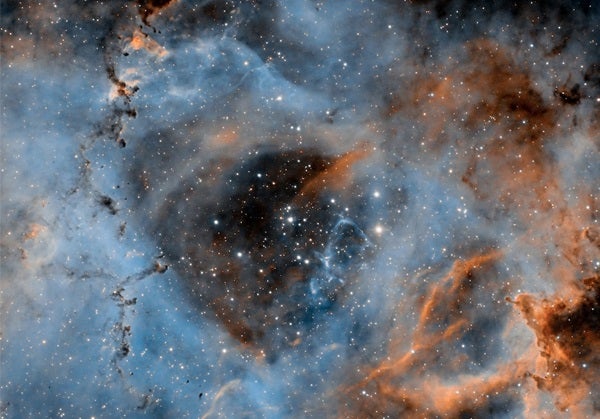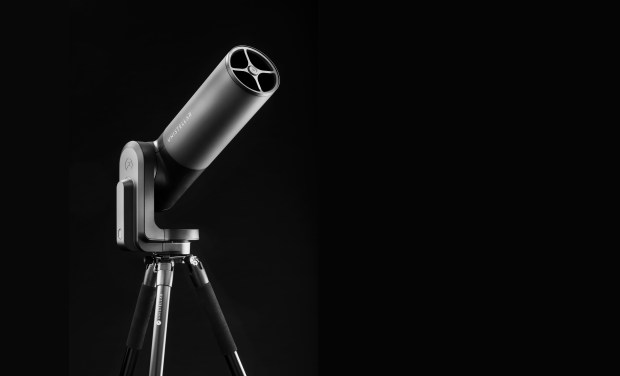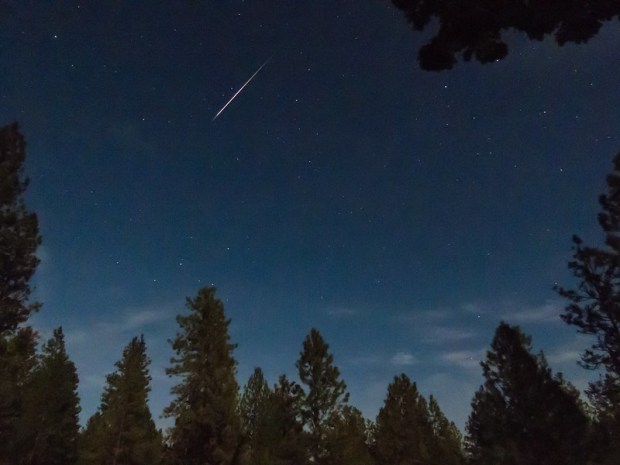Observers and astroimagers usually think of the magnificent Rosette Nebula as a single deep-sky object. But actually, this combination of a star cluster and nebula has five separate entries in the New General Catalogue: NGC 2237, NGC 2238, NGC 2239, NGC 2244, and NGC 2246. And although they all lie within the constellation Monoceros the Unicorn some 5,200 light-years away, they weren’t all discovered at the same time.
The beautiful open cluster NGC 2244, which lies at the center of the nebulous complex, was found by English astronomer John Flamsteed in 1690. Then, in 1830, John Herschel discovered the first nebulous region, NGC 2239. Next up was NGC 2238, discovered in 1864 by German astronomer Albert Marth. To complete the picture, American astronomer Lewis Swift discovered NGC 2237 in 1871 and NGC 2246 in 1885.
You won’t have any problem seeing NGC 2244. If your observing site is dark, a 4-inch telescope will reveal 25 stars in an oval region that stretches northwest to southeast. It’s a bright oval, too. Six of the stars are brighter than 8th magnitude. Move up to an 11-inch scope, and the background star count will surpass 100. Whichever scope you choose, start with an eyepiece that has a true field of view between ½° and 1°.
Two things will help you observe the four nebulous regions that surround NGC 2244: low power and a nebula filter. A magnification around 50x will give you a wide field of view, and the filter will dim the cluster’s stars.
Make sure to explore Astronomy‘s full list of 101 cosmic objects you must see. New entries will be added each week throughout 2022.










